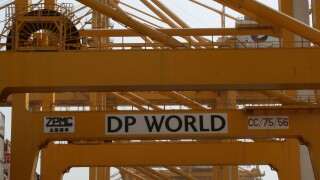Middle East Bonds
-
The note traded higher on secondary markets on Wednesday
-
Lack of bonds and sukuk from Oman should create high demand, said one observer
-
Gulf investors have had very little sovereign sukuk to buy this year
-
Demand was much better than similar deal from two months ago
-
Low Gulf corporate bond issuance volumes prompt big book and small NIP for port operator
-
Asian buyers are limiting their involvement in Middle East bonds for all but the very best issuers
-
The sovereign has already raised $16bn this year via a sukuk and a conventional bond
-
Investors in Asia made up a quarter of a previous sukuk, but few took part in July’s deal
-
Deal aligns with government drive to develop local market
-
-
Dar Al Arkan, a speculative grade issuer, hit the top end of its size target
-
Investors may be tiring of GCC real estate issuance but borrower is a familiar face












